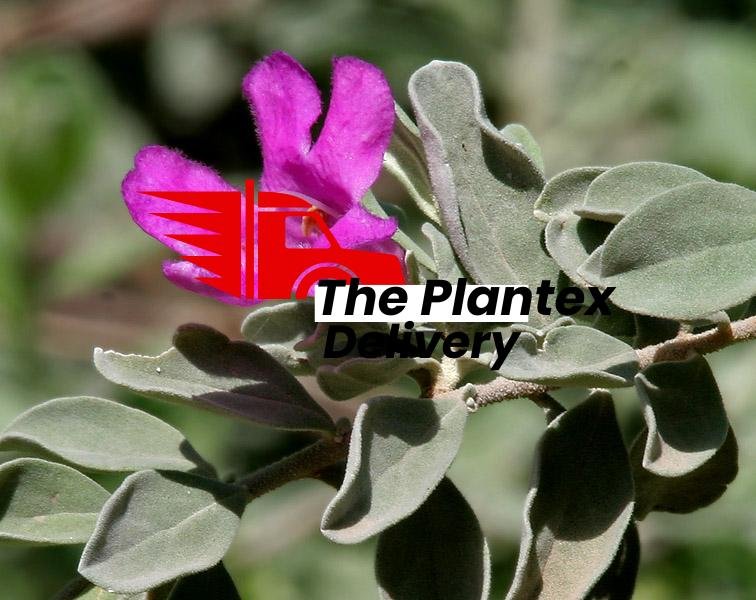Description
Common: Texas ranger
Family: Scrophulariaceae
Origin: Northern Chihuahuan Desert of Texas, Rio Grande plains, southern Trans-Pecos and sparingly in the Edwards plateau.
Growth Habit: Evergreen to semi-evergreen woody perennial shrub, moderately upright and spreading to 8 to 12 feet in height with near equal spread.
Foliage/texture: Small to 1 inch long, elliptic to obovate gray sessile leaves, tomentose; medium fine texture.
Flowers & fruits: Many axillary magenta to lavender flowers bloom on new wood, flowers attract bees; fruits are inconspicuous.
Seasonal color: Flowers episodically in intense bursts every 4 to 6 weeks during warm season usually starting in late March until November.
Temperature: Tolerant of both desert heat and cold. However, some Texas ranger shrubs (especially the variety green cloud) will go partially deciduous during the winter months.
Light: Full sun
Soil: Prefers alkaline soil
Watering: Apply no supplemental water during winter. Irrigate as necessary during summer particularly during those summers when monsoon rains are sparse.
Special watering note: All in Phoenix must realize that the number one stimulant of landscape plant growth is irrigation water volume applied to landscapes. Therefore, use water wisely! Texas ranger is an iconic plant to practice this concept. Water Texas ranger less and it will respond with slower growth needing less pruning to keep it’s size in check.
Pruning: One can remove any amount of vegetation from Texas ranger shrubs and they will respond with vigorous regrowth throughout the growing season. My recommendation is to extensively rejuvenate Texas ranger shrubs during late February to early March and then leave them alone for the remainder of the year. The result will be beautiful shrubs that have an appropriate size, a natural form, and flower profusely. When I prune Texas ranger shrubs this way I use hand pruners and/or loppers to remove stems at various lengths using heading and thinning cuts. When I’m finished pruning a Texas ranger shrub, I’ve removed about 2/3rds of its overall standing shoot mass. I’m content then to not prune it the rest of the year. I also water conservatively to promote a slow growth rate.
Sadly though, Texas ranger shrubs in Phoenix ARE the ‘meatballer’, ‘Rubic’s cube’, ‘beerkegger’, ‘loaf of bread’, ‘living totem pole’ or ‘landscape blocks’ shrub of choice for ignoramus, horticultural clods to shear! Check it out and see ’em do it! ‘Hort clods’ shear these wonderful shrubs all year around even when flowering, to apparently show that they are indeed doing something called ‘landscape maintenance’ in order to justify receiving payment for their monthly billing statements. Please avoid this bogus practice and be a real horticulturist! Prune Texas ranger only once per year in early March.
The only exceptions to my professional recommendation are when one is trying to either create a migratory ‘igloo for iguanas’ in their front yard or to simulate a cosmic planetary collision.
Propagation: Seed and cutting (softwood or semi-hardwood). Texas ranger shrubs will occasionally reseed in urban landscapes.
Disease and pests: In the Phoenix area, Texas root rot can kill Texas ranger shrubs in late August (soil temperatures must be above 80oF) if soils are poorly drained and the shrubs are growing on former agricultural soils.
Delivery: With in one day
Any questions, feel free contact us:







Reviews
There are no reviews yet.